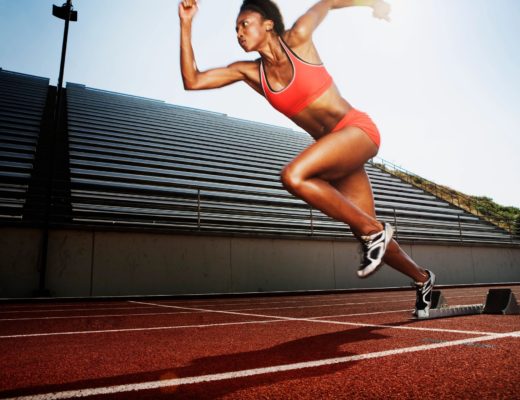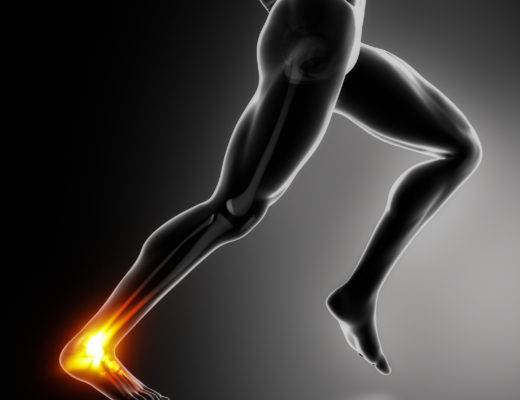
What I Wish I knew as a Student Athlete Part 1; Sprinting Mechanics
The phases of running never seemed to be a topic of discussion when it came time for test week throughout my football career. We ran 40-yard dashes every year, yet—maybe it was because I was an offensive lineman—we got skipped over when it came time to learn proper sprinting mechanics. I can’t remember one time when the coaches critiqued us on our form while running the all-important 40-yard dash, other than a “pump your arms” cue or the always helpful “explode!” Now, after years of studying and experience learning from great coaches all over the country I have a better understanding of 1) The phases of sprinting, 2) how to warm up, and 3) simple drills to correct common mistakes.
Every athlete should know about the two phases of sprinting: the acceleration phase and the maintenance or Max-V Phase. I can’t say that one is more important than the other, as one feeds right into the next.
Acceleration
The Acceleration phase begins with being in a good starting position, with your body weight leaning forward and your hips and shoulders loaded. Think of a spring when you push it down (“load it”), then as soon as you release it shoots straight up. We want to replicate this mechanism with the body, shoot out and cover as much ground as possible in the least amount of time. The light switch flipped for me when I was at my internship in college and the coach I was shadowing was describing shin angles. He said we want to drive the foot behind the center of mass so that we can push the body forward. It made complete sense when he then mentioned Newton’s third law: For every action there is an equal and opposite reaction. He then threw a tennis ball straight down and guess what, it popped straight up. So, if the first step out of the start contacts the ground directly under or in front of our center of gravity, we have no option but to go straight up, which happens to be the number one mistake I see in athletes “Backside mechanics” while running sprints of any distance.
Instead, aim to contact the ground behind the COG (center of gravity) with your hip, knee and ankle fully extended. That way you will push the body forward and properly set up our second step. In the track and field world you will hear the term “low heel recovery,” which is the same concept but focusing on the “front side mechanics”.
When watching any 100-meter race, you will see the top starters almost drag their back toe on the ground as they drive out of the blocks. This limits the amount of time it will take for that foot to contact the ground again and push their body forward for the second time. The higher that foot gets off the ground, the longer it will take to put force into the ground again. We want to punch the ground as hard as possible as fast as possible in the appropriate direction and be able to replicate that throughout the acceleration phase.
Max-V
The Max-V, or maximum velocity, phase is where you have to be as efficient as possible. The time for increasing speed is over. Now it’s all about slowing down as slowly as possible. In this phase, the legs go from a piston action to more of a cyclical or step-over action. The key to success here is to stay as tall and stable as possible. The hips and shoulders need a fully stabilized torso so that they can produce and transfer forces efficiently.
The target for each ground contact transitions from behind the COG to directly under the COG so that we eliminate “over striding” which will cause you to slow down faster. When people are racing and start to fall behind, they often go into panic mode and start reaching forward opening their stride too much as a last ditch effort, instead of pulling or clawing the track behind them. Once the foot leaves the ground, you want to bring your heel towards your butt as quickly as possible, then drive your knee up so that you can get a greater stretch of your gluteal and hamstring muscles and use their elastic properties to drive right back into the ground.
Sprinting is a highly technical skill that requires a strong movement foundation and years of practice to master. These are simply the missing pieces that helped my own understanding of how to sprint. There are plenty of different points of view on certain aspects of sprinting and how to coach and cue athletes. I hope taking some of these into consideration can be helpful to you and any athletes you work with.
Stay tuned for how to warm up and drills for common mistakes




Scott L.
May 3, 2016 at 4:18 amNice blog Travis! Keep them coming.
goyeneche
May 3, 2016 at 9:15 pmWill do Scott, thanks for reading
Spud
December 25, 2016 at 5:06 pmIt’s always a pleasure to hear from someone with exreitpse.
Lyzbeth
December 25, 2016 at 5:07 pmThe paragon of undansterding these issues is right here!